MAMBILA:
Tadep "Ancestor" Figures
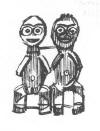 
Discovering African Art
Ethan Prosnit
In completing one's discovery we never fail to get an
imperfect knowledge of others of which we could have no idea before, so
that we cannot solve one doubt without creating several new ones.
- Joseph Priestley
The Discovery Process:
The above Joseph Priestley quote, reflects the main focus of this project.
I picked an African art piece from the Worcester African Cultural Center
to discover. Through learning about my piece of artwork, I gained
knowledge of not only my piece of work but about the entire community that
it came from.
The pictures below are the discovery phase of this project. The picture
to the left is of the figure that I chose to discover and the picture to
the right is of me discovering and interpreting my piece.
CLICK TO ENLARGE
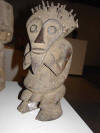
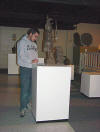
Description
of Mambila Cultural Group:
The figure that I have researched above is a Tadep
Figure from the Mambila Cultrual Group. The Mambila people live on
the border region between Cameroon and Nigeria. (Click
for map of region).
They live a
life dedicated to tilling the soil and harvesting their crops, working as
a community, and honoring their spiritual forces and their ancestors. The
Mambila have a rather democratic society, with work shared between men and
women, and are one of
the only communities in West Africa where
equality
between individuals is stressed.
Description
and Usage of Tadep Figures:
The main
purposes of tadep figures are to honor ancestors of the Mambila people.
When creating the tadep the carver will only use one piece of wood,
usually a soft wood like pith from a raffia palm. All tadep forms are of
humans because they are created to honor and recognize ancestors.
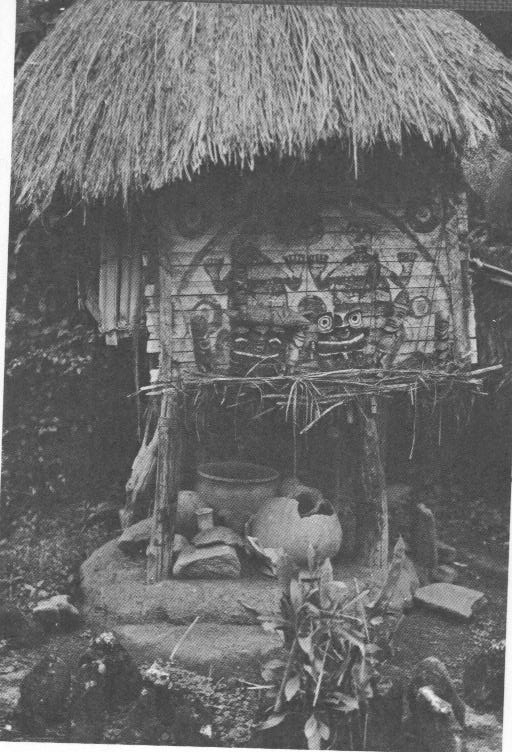
Tadep
figures serve many functions for the Mambila. Tadeps personify a
healing spirit, protect the shelter from thieves, and encourage fertility.
Tadeps are stored in the entrance way of a shelter for ceremonial
objects that the elder in the community watches and maintains. These
figures, along with other ceremonial objects, are hung above the entrance.
The tadep figures are treated rather casually,
if one falls to the ground it is left to decay and be pecked and kicked by
chickens and goats. It is not uncommon for tadep figures to be replaced
every year.
Pictured Above: Shelter where tadep figures are stored
Common
attributes among all tadep figures are the circular eyes, the almond shape
mouth, the elongated nose connected to the eyebrows, the feet apart, and the
hands in front of the body Noticeable in most
tadep figures are holes, scratches, and a generally beat up appearance.
Pictured Below: Examples of other tadep
figures
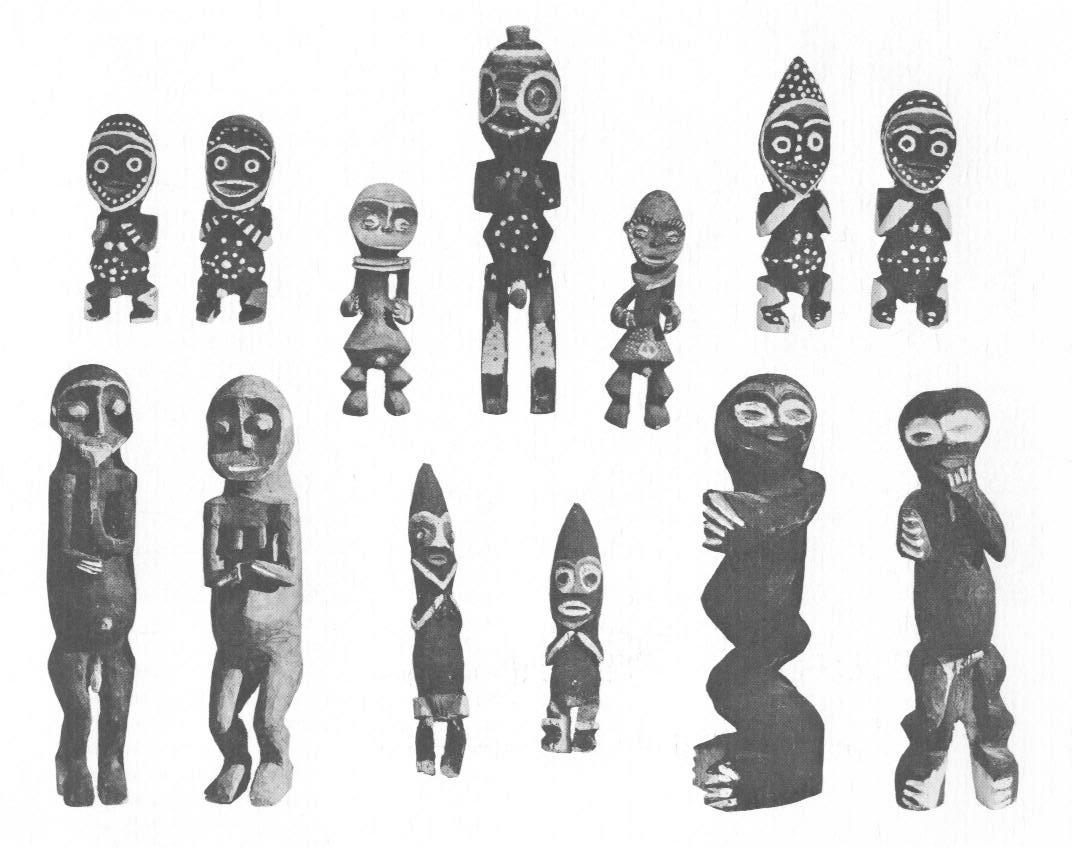
Resources and Further
Reading on the Mambila Cultural Group and Tadep Figures:
Africa
Direct - Ethnographic Art
African Art website that gives descriptions of many different Mambila art
forms
Clark
University Discovery African Art Website
Professor Jean Borgatti: Spring 2004
Eyo,
Ekpo. Two Thousand Years of Nigerian Art. Lagos, Nigeria: Federal
Department of Antiquities, 1977.
Roy,
Christopher D. African Sculpture. Iowa City, Iowa: The University
of Iowa Museum of Art, 1979.
Schwartz, Nancy Beth A. Mambilla – Art and Material Culture.
Milwaukee, Wisconsin: Milwaukee Public Museum, 1976.
Back to Top |